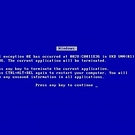Hey, everyone.
I am working on a minimalist architecture boilerplate and blog post to go along with it explaining the “Urho3D way” to n00bs. It is not meant to show off all the subsystems but to show one example of a potential basic architecture (the thing I personally struggled with the most). The project will remain small is scope.
What do you guys think of it overall as it stands now ? This is more of an alpha version than anything else; I expect a lot to change. With the help of your feedback, I want to get this blog post live with the v1.0 of the code.
At least one thing I am unsure about is how the player is handled . Any suggestions there would be most appreciated. Maybe it is fine as it is? Not sure of the ideal way to handle that one.
One final note: Comments will be added once the code base settles down a bit.
Thanks for your time and input!
I would like to recognize Miegamicis for his new project template . His is meant to be more “complete” than mine so if you want a more fleshed-out starting off point go with that.



